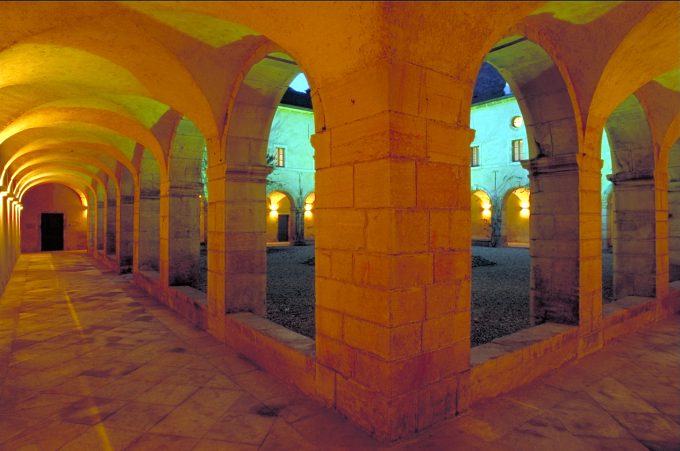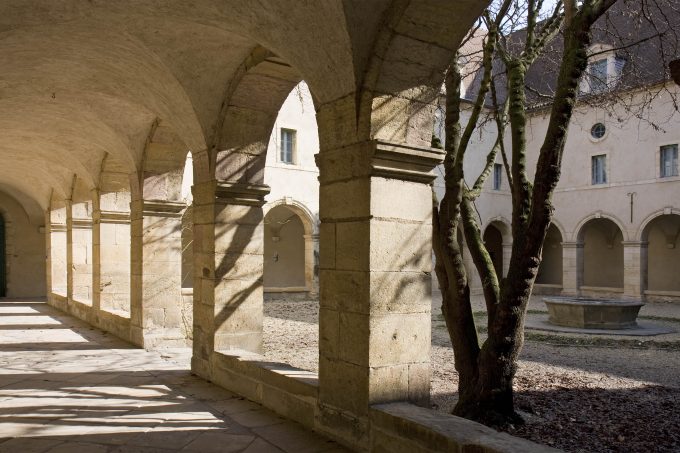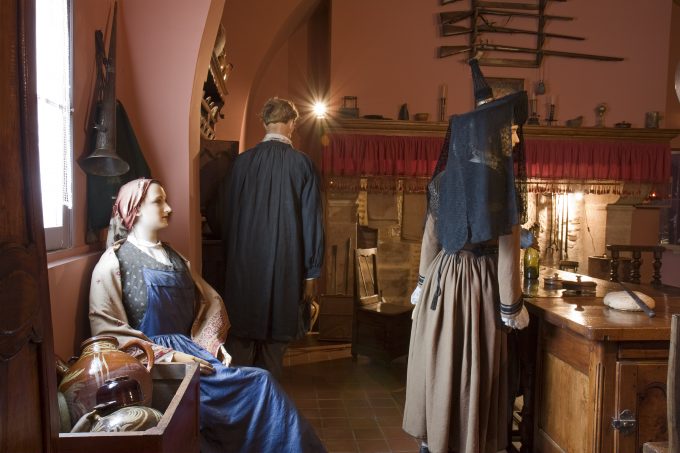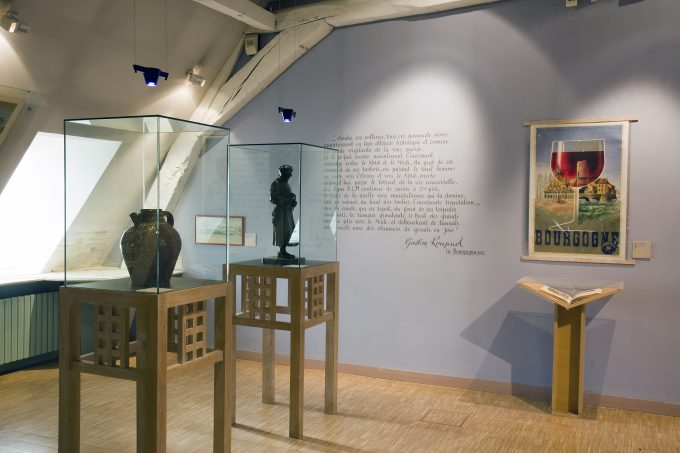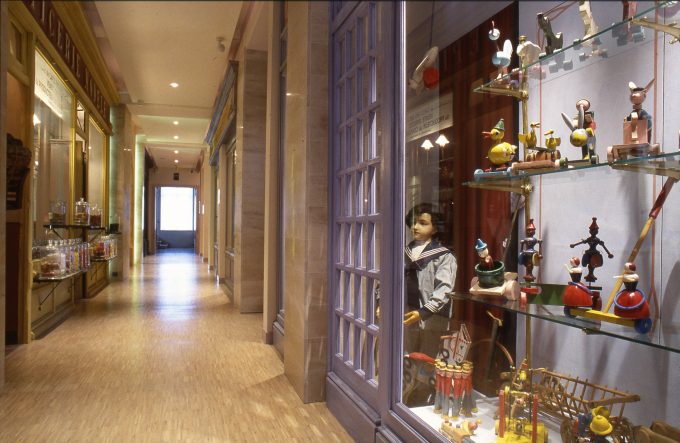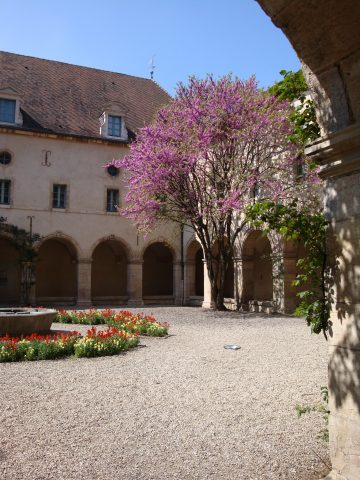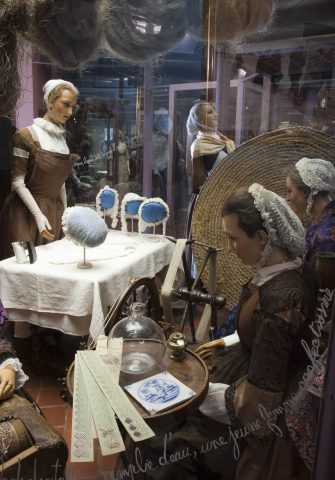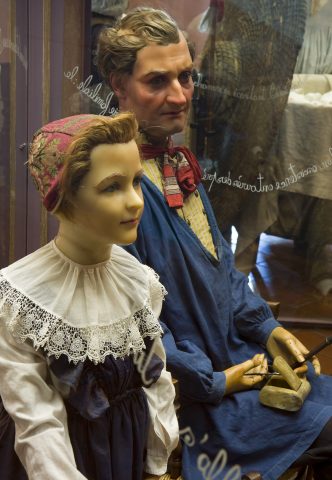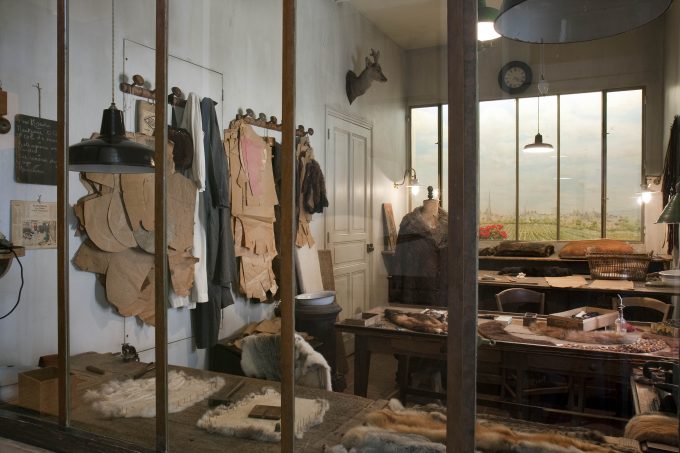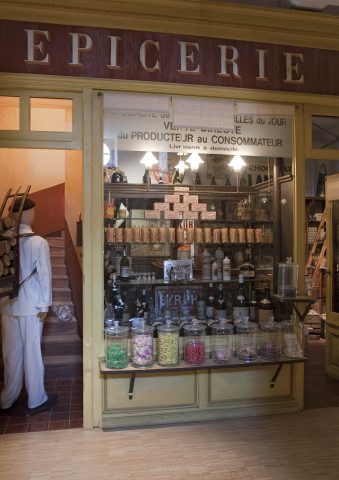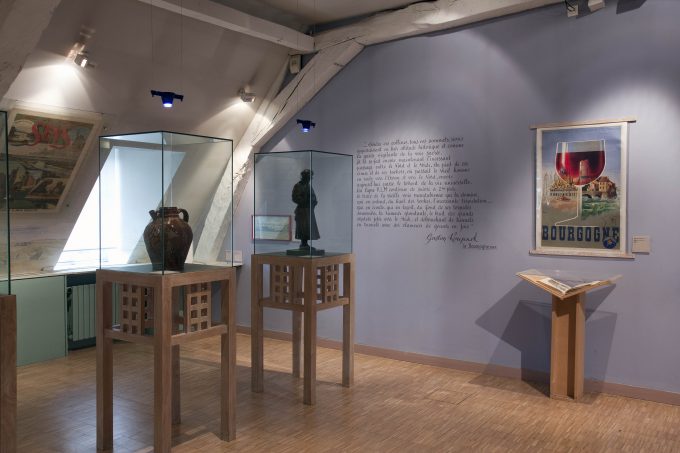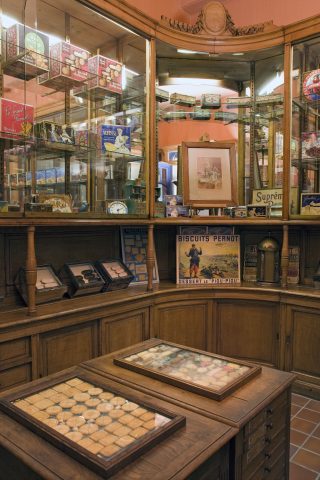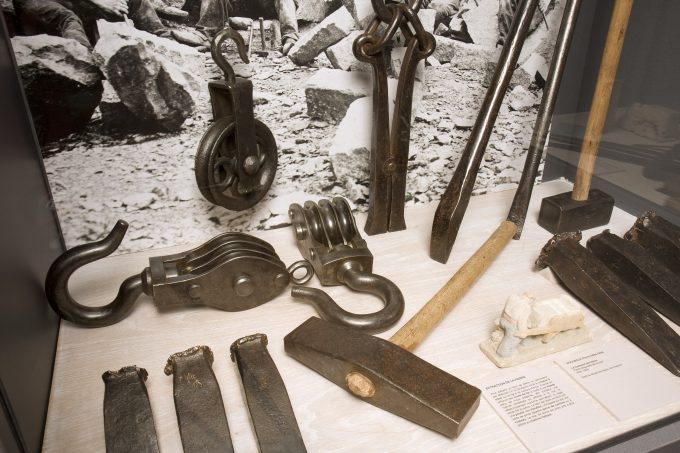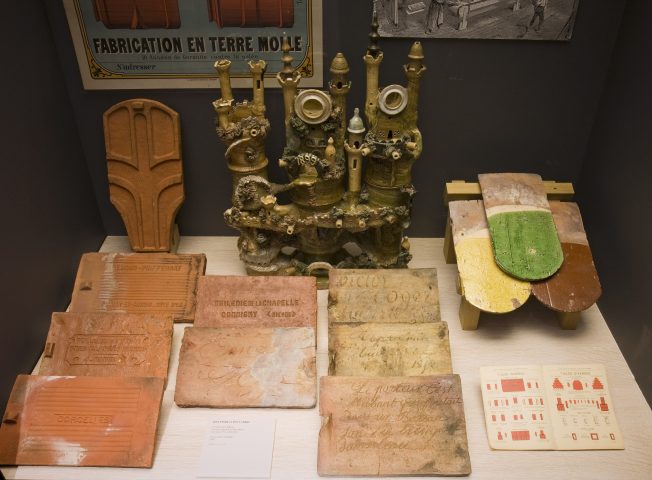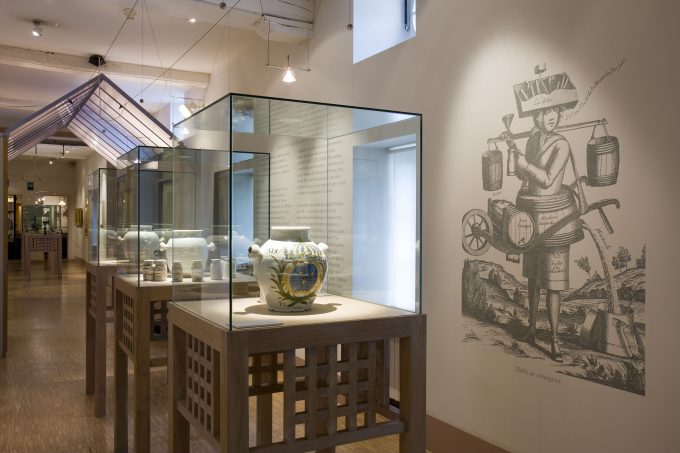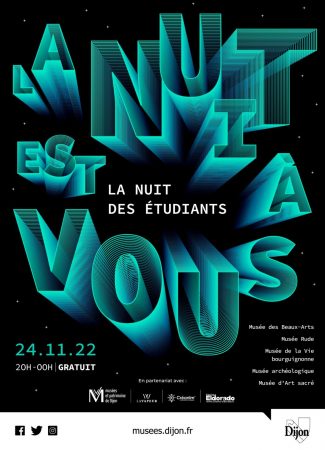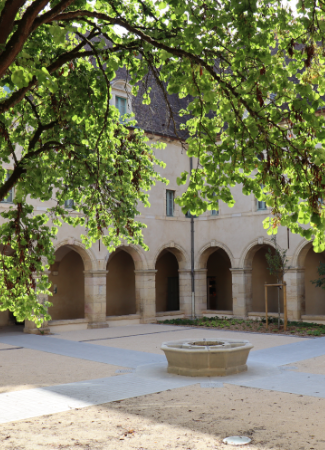Housed in the very first Cistercian nunnery founded in the 12th century and transferred to Dijon in the 17th century, these museums offer the visitor an invaluable insight through the heart of the province. The Perrin de Puycousin Museum of Burgundian life: This museum displays ethnographic rural objects collected at the end of the 19th century by M. Perrin de Puycousin, a celebrated folklorist. Thanks to him, you will find a wealth of furniture, household implements, regional costumes, all of them on display in a true- to-life context. In addition, life-size shops which used to be located in the streets of Dijon have been faithfully reconstituted. Among them a chemist's, a grocer's, a butcher's, a clockmaker's , a toyshop etc... Original posters and signs which used to adorn the walls of Dijon advertise former local industries and present-day Burgundian specialties. The visitors can't miss the special section devoted to the history of mustard... Finally, detailed explanations concerning the various local crafts based on the geological environment will show the visitors how craftsmen used to work on stone, clay and wood. Not only do these elements shape the nearby landscapes but they are also to be noticed in architecture, every-day objects or furniture.
Types
- Popular arts and traditions
- Professions / trades
- Museum
Quality labels
- Musée de France
- Municipal museum
On site
Facilities
- Specific theme activities
- Adult workshop
- Junior workshop
- Specialist conferences
- Conferences
- Temporary exhibitions
Services
- French
- English
- Library
- Shop
Amenities
- Film projection room
Prices
Payment methods
- Cheques and postal orders
- Cash
Opening times
Open all year round, 9.30am to 12.30pm and 1.30pm to 6pm. Closed on Tuesdays.
Closed on 1 January, 1 May and 8 May,
14 July, 1 and 11 November, 25 December
Special opening conditions
All measures are taken to welcome you in the best conditions:
- The sanitary capacity of the museums is calculated according to the surface area accessible to the public and taking into account the spatial configuration of the premises:
400 people for the Fine Arts Museum, for 6500 m2 ;
30 people for the Rude Museum, for 180 m2 ;
150 people for the Archaeological Museum, for 1600 m2 ;
250 for the Musée de la Vie bourguignonne, for 2000 m2 ;
120 for the Musée d'Art Sacré, for 980 m2.
- A count of visitors at the entrance and exit, with signposting of the route to limit the crossing of flows as much as possible;
- Respect for barrier measures: wearing a mask, disinfectant solution on entry, etc
This provider also proposes
Events

